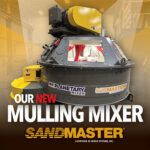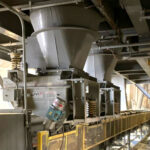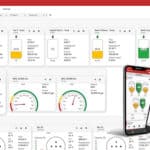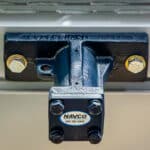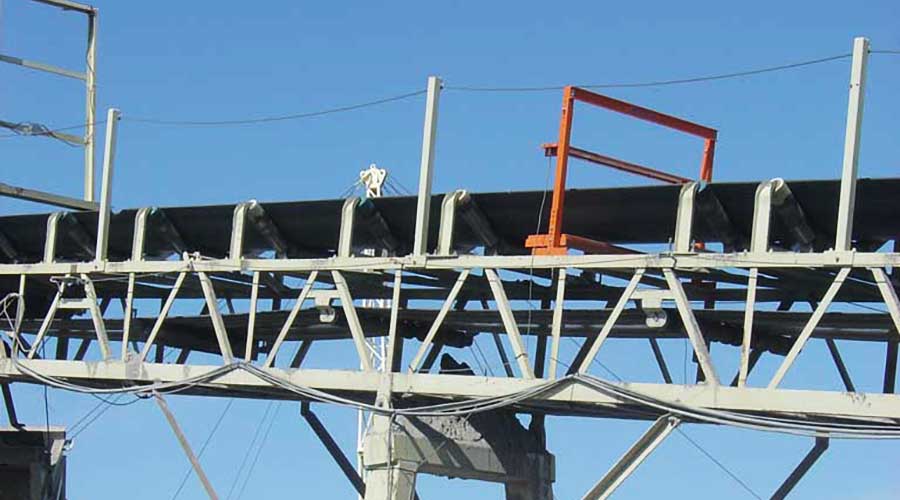
Protect Your Mining & Aggregate Equipment from Production Halting Tramp Metal
Tramp Metal can take a smooth-running mining or aggregates process and stop it on a dime. These metals can damage large expensive equipment such as cone crushers and impact crushers causing long downtime in your production. William Neundorfer & Co. has found that one of the best ways to help our customers protect their equipment is to utilize Tramp Metal Detectors on their conveyor systems that feed these critical pieces of equipment. In this article we will break down what tramp metal is, how tramp metal detectors work, and the production benefits of incorporating a detector into your process.
What is Tramp Metal?
Tramp metal is metallic scrap that find its way into material as it moves along a conveyor system during the mining process. Tramp metal can come from many different sources and include items such as tools, chains, and pieces of upstream equipment that have broken off.
How do Tramp Metal Detectors Work?
The detector is incorporated into the conveying system allowing the belt and material to pass freely through it. Sensors below the conveyor discriminates between wanted material and unwanted conductive materials and metals, both magnetic and non-magnetic, ferrous and non-ferrous metals.
When tramp metal is found by the detector it will bring the conveyor to a stop and allow the unwanted metal to be removed. Marking devices can be incorporated to work with the detector and identify where the tramp metal is located on the conveyor. These marking devices can be highly accurate spray markers that mark every piece of tramp metal as it passes through or a flag drop systems that identifies where the initial tramp metal is found and provides the number of pieces that should be removed behind it. The personnel overseeing the process then go remove the tramp metal and start the conveyor moving again.
Tramp Metal Detectors Benefits
Tramp metal detectors protect equipment and people. When a piece of tramp metal finds its way into the crusher it can lodge itself in the equipment and damage it. When this happens, production is brought to a stand still until the metal can be removed and the equipment repaired. Depending on how lodged the metal is and the degree of damage to the equipment it caused it could take days to get the process up and running again. To remove the lodged metal requires personnel to enter the equipment. By preventing the metal from entering the equipment personnel are kept safety outside of the equipment.
Detectors WNC Recommends
William Neundorfer & Co. recommends three models of Tramp Metal Detectors for our mining and aggregates customers:
Model 50
Considered the “work horse”, the Model 50 can be incorporated into any conveyor belt systems and is tailored for use with non-magnetic conveyed materials or magnetic, highly conductive ores. Some of the industries using and benefiting from the consistent performance of the Model 50 are: Stone, Sand, Aggregate, Ore, Cement, Ceramics, Coal and Wood.
Model 100
Model 100 is a step up from the Model 50. It is designed to accommodate a larger and heavier burden depth and fit onto most standard CEMA conveyors. Some of the industries using and benefiting from the heavy-duty design of the Model 100 are: Aggregate, Mining, Asphalt, and Wood.
Model 5500
High Sensitivity. The Model 5500 is able to detect much smaller pieces of tramp metal than the Model 50 & 100. Under specific applications it can detect metal as small as 5/32” cube. Some of the industries using and benefitting from the high sensitivity performance of the Model 5500 include: Plastics, Rubber, Rock and Aggregate, Ore, Glass Cullet, Wood, Textiles, Cement and Agricultural Products.
Tramp Metal Detectors protect your processing equipment and personnel. If you think a tramp metal device might be right for your application contact us today. William Neundorfer & Co. has the experience and knowledge to incorporate conveyor belt safety, including these metal detectors, into your specific application and help ensure your equipment and personnel are protected.
For more information or details on how we can help you select the right equipment for your application, contact Wm Neundorfer & Co today.
We have the expertise and experience to ensure you get the advice and recommendations you require for your specific application.

